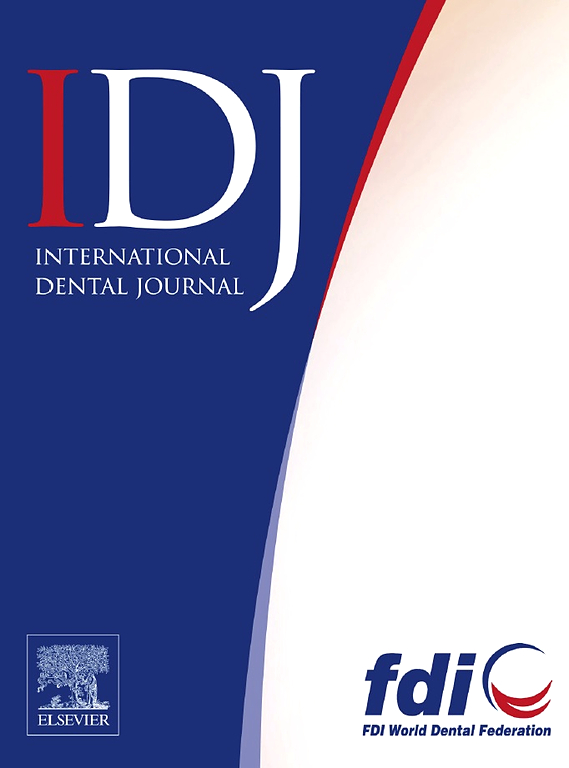牙周炎中噬铁蛋白相关生物标志物的鉴定和验证
IF 3.2
3区 医学
Q1 DENTISTRY, ORAL SURGERY & MEDICINE
引用次数: 0
摘要
虽然噬铁蛋白被认为在牙周炎的发展中起重要作用,但确切的机制尚不清楚。本研究旨在利用转录组学数据研究牙周炎中与铁蛋白吞噬相关的生物标志物。方法来自Gene Expression Omnibus的两个牙周炎相关数据集GSE10334和GSE16134分别作为训练和验证队列。此外,从GeneCards数据库中获得36个食铁蛋白相关基因(FRGs)。我们比较了牙周炎组和对照组中FRGs的表达差异,确定了不同的FRGs作为候选。加权基因共表达网络分析(加权基因共表达网络分析,WGCNA)利用候选FRG评分作为特征,捕获与牙周炎相关的关键模块和模块基因。然后,我们将这些与关键模块基因交叉,以鉴定差异表达的FRGs。Hub基因通过蛋白-蛋白相互作用网络进行筛选。最终,通过机器学习、受试者工作特征曲线和表达水平获得生物标志物。此外,还分析了生物标志物相关的免疫细胞和功能途径,以预测上游调控分子。结果共有18个候选FRGs在牙周炎组与对照组之间存在显著差异,通过分析1096个差异表达基因和4479个关键模块基因,从蛋白-蛋白相互作用网络中鉴定出175个差异表达FRGs中的8个枢纽基因。最终,通过机器学习算法、受试者工作特征曲线分析和基因表达评估,确定ALDH2、地西泮结合抑制剂、HMGCR、OXCT1和ACAT2为潜在的生物标志物。此外,静止树突状细胞、肥大细胞和滤泡辅助性T细胞与5种生物标志物呈正相关(Cor >;0.3和P <;. 05)。所有五种生物标志物都参与翻译起始途径,包括转录因子如KLF5和microrna如hsa-miR-495-3p和hsa-miR-27a-3p。逆转录-定量聚合酶链反应分析显示,所有生物标志物在牙周炎组均低水平表达。而OXCT1和ACAT2在两组间的表达水平差异无统计学意义。结论共筛选了5种与铁蛋白吞噬相关的生物标志物ALDH2、地西泮结合抑制剂、HMGCR、OXCT1和ACAT2,为牙周炎的治疗探索新的选择。本文章由计算机程序翻译,如有差异,请以英文原文为准。
Identification and Validation of Ferritinophagy-Related Biomarkers in Periodontitis
Objective
While ferritinophagy is believed to play a significant role in the development of periodontitis, the exact mechanisms remain unclear. This study aimed to investigate the biomarkers associated with ferritinophagy in periodontitis using transcriptomic data.
Methods
Two periodontitis-related datasets from Gene Expression Omnibus, GSE10334, and GSE16134, served as the training and validation cohorts, respectively. Additionally, 36 ferritinophagy-related genes (FRGs) were obtained from the GeneCards database. We compared the expression differences of FRGs between the periodontitis and control groups, identifying the different FRGs as candidates. Weighted gene coexpression network analysis (WGCNA) was applied to capture the key modules and modular genes related to periodontitis, utilizing the candidate FRG scores as trait. Then we intersected these with key module genes to identify differentially expressed FRGs. Hub genes were filtered using a protein-protein interaction network. Ultimately, biomarkers were acquired through machine learning, receiver operating characteristic curves, and expression levels. In addition, biomarker-associated immune cells and functional pathways were analysed to predict the upstream regulatory molecules.
Results
In total, 18 candidate FRGs showed significant differences between the periodontitis and control groups, and from the protein-protein interaction network, eight hub genes were identified among the 175 differentially expressed FRGs by analysing 1096 differentially expressed genes and 4479 key modular genes. Eventually, ALDH2, diazepam binding inhibitor, HMGCR, OXCT1, and ACAT2 were identified as potential biomarkers through machine learning algorithms, receiver operating characteristic curve analysis, and gene expression assessments. In addition, resting dendritic cells, mast cells, and follicular helper T cells were positively correlated with the five biomarkers (Cor > 0.3 and P < .05). All five biomarkers are involved in the translation initiation pathway, including transcription factors like KLF5 and microRNAs such as hsa-miR-495-3p and hsa-miR-27a-3p. Reverse transcription-quantitative polymerase chain reaction analysis showed that all biomarkers were expressed at low levels in the periodontitis group. However, the differences in expression levels for OXCT1 and ACAT2 between groups were not statistically significant.
Conclusions
A total of five ferritinophagy-related biomarkers – ALDH2, diazepam binding inhibitor, HMGCR, OXCT1, and ACAT2 – were screened to explore new treatment options for periodontitis.
求助全文
通过发布文献求助,成功后即可免费获取论文全文。
去求助
来源期刊

International dental journal
医学-牙科与口腔外科
CiteScore
4.80
自引率
6.10%
发文量
159
审稿时长
63 days
期刊介绍:
The International Dental Journal features peer-reviewed, scientific articles relevant to international oral health issues, as well as practical, informative articles aimed at clinicians.
 求助内容:
求助内容: 应助结果提醒方式:
应助结果提醒方式:


